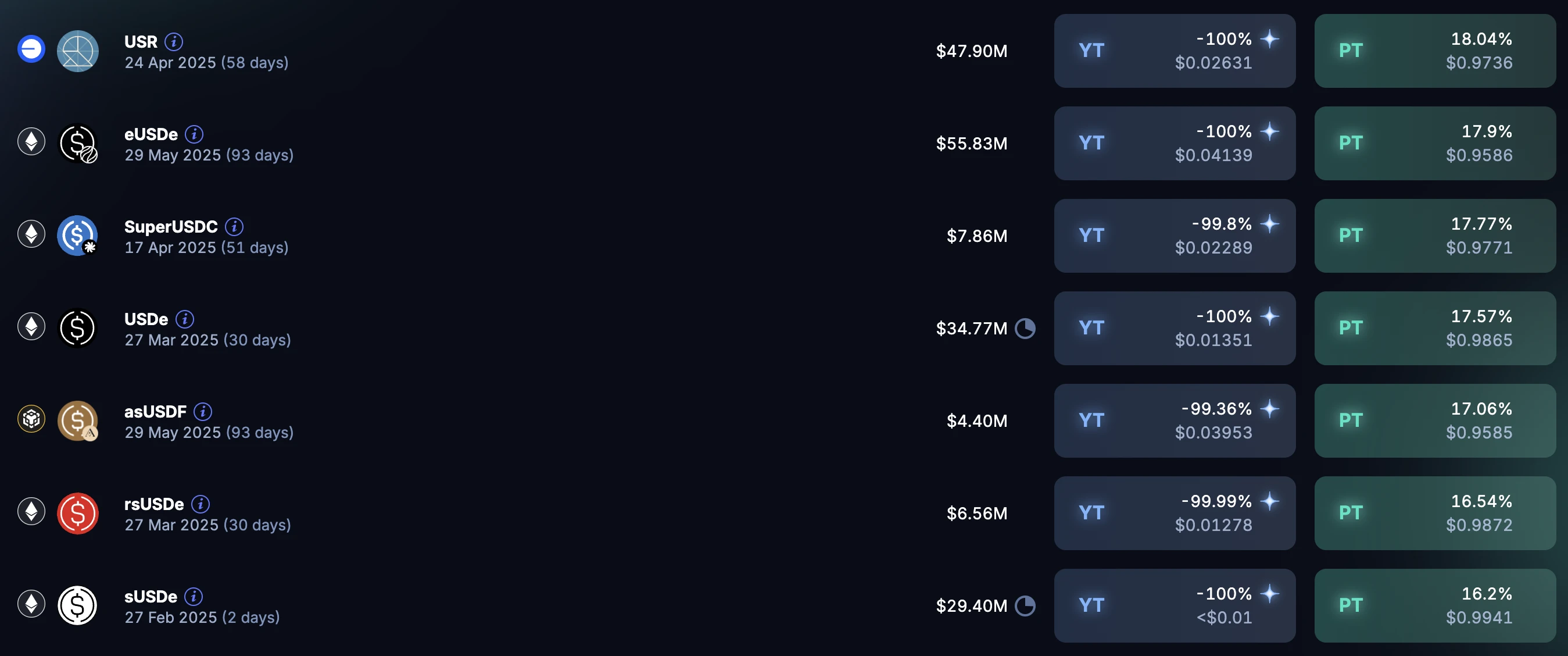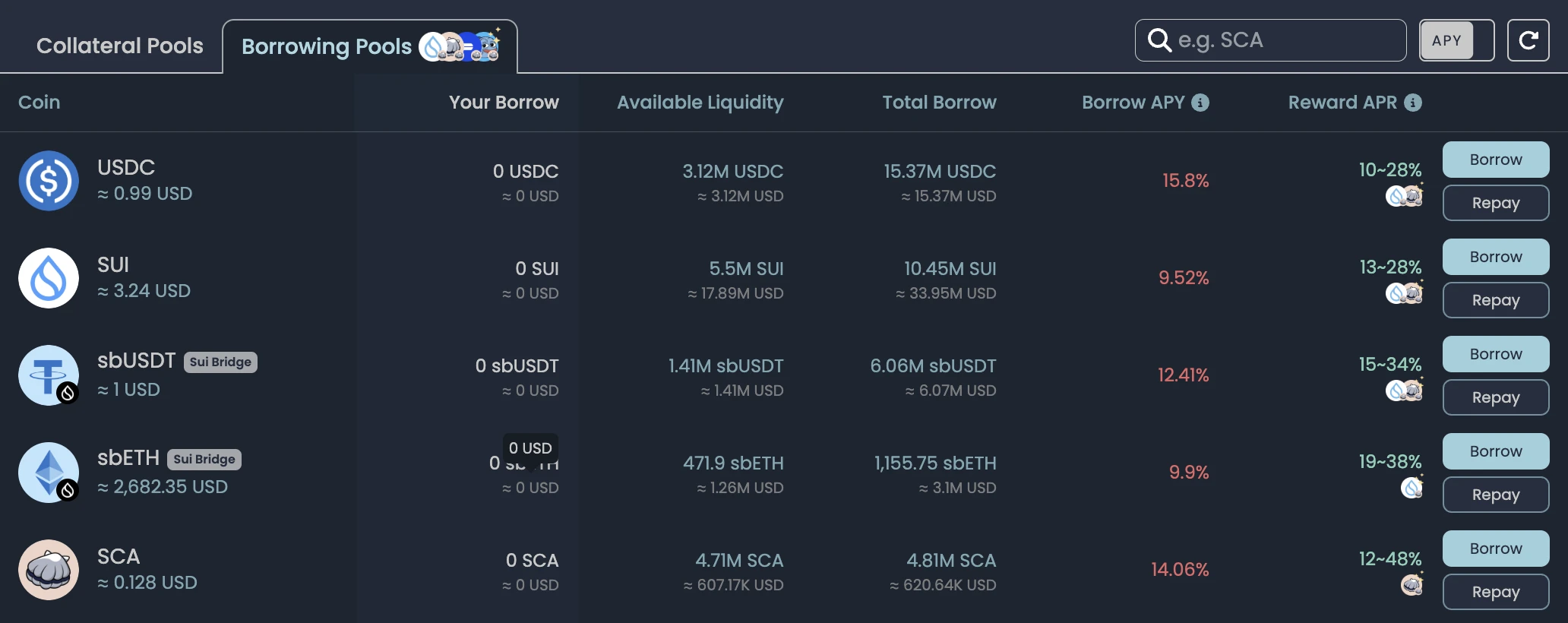Instead of losing PvP, it is better to make a steady profit of 20% a year.
original| Daily Planet
author| Azuma
It is too difficult to speculate in coins. Altcoins are falling and falling, and PVP has lost many battles. Instead of continuing to persist, it is better to turn back and be saved.
As the difficulty of market operations rises sharply, more and more users are turning their attention to more controllable opportunities to make money. In response to this appeal, the Odaily Planet Daily decided to open a “U-standard financial management strategy that is more suitable for lazy people” column. This column will cover the relatively low-risk (systemic risk can never be ruled out) income strategies dominated by stablecoins (and their derivative tokens) in the current market, aiming to help those users who want to gradually increase the amount of money through U-standard financial management find more ideal interest-earning opportunities.
This column is tentatively scheduled to be revised weekly. If readers have high feedback needs, relevant strategies for BTC, ETH, and SOL standards will also be released later.
To put it a “hot” knowledge, in the past 20 years (October 15, 2004 to October 14, 2024), Buffett’s average annualized rate of return is about 10.96%. However, in the early stages of financial systematization and structure, every ordinary person can break through this number very “simply”.
Base interest rate (least efficient)
The so-called base interest rate will temporarily cover mainstream CEX single-currency financial management plans, as well as mainstream chain lending, DEX LP, RWA and other DeFi deposit plans.
CEX end
Binance: USDT single currency financial management (api) is provisionally quoted at 2.7%, with a 5% additional bonus within 0 – 500 USDT;USDT single currency financial management is provisionally quoted at 1.89%, with a 7% additional bonus within 0 – 500 USDC;
OKX: USDT single-currency financial management is provisionally quoted at 2% ;USDC single-currency financial management is provisionally quoted at 2% ;
Bitget: USDT single-currency financial management is temporarily priced at 4.12%, and there is an additional 8% bonus within 0 – 500 USDT.
chain
-
Ethereum
Aave:USDT 4.18% ;USDC 4.27% ;DAI 5.13% ;
Fluid:USDT 9.43% ;USDC 8.07% ;
Ethena:sUSDe 9% ;
Sky:sUSDS 8.75% ;
-
Solana
Kamino:USDT 4.72% %;USDC 6.53% ;PYUSD 6.56% ;USDS – USDC LP 11.24% ;
margin.fi:USDT 5.69% ;USDC 5.87% ;PYUSD 6.41% ;
-
Base
Aave:USDC 5.04% ;
Aerodrome:USDC – USDT LP 13.88% 。
Pendle zone (core strategy)
At present, if you want to amplify the yield of stablecoins, you cannot avoid structured or leveraged products. Taking into account security and liquidity conditions, Pendle is undoubtedly the most suitable venue.

As shown in the above chart, the PT earnings of multiple stablecoins on Pendle can reach 15% or higher, significantly exceeding the industry’s base interest rate level.
The hottest pool in the near future is the eUSDe (Ethreal’s USDe deposit certificate) pool that expires on May 29. The current price of direct purchase of PT corresponds to 17.9% for apy, and the yield corresponding to the maturity date is approximately 4.56%.
You can also choose to go to the pool’s LP (eUSDe – eUSDe PT). Although the corresponding yield will drop to 7.546%(it will increase to 9.09% if there is a full PENDLE pledge), you can get an additional 1.6 times Ethreal points bonus and 50 times Ethena Sats points bonus-there will be extraordinary losses if you withdraw early, but the loss will be gradually wiped out when you hold the position until it expires.
In addition, the “old gold pool” sUSDe (Ethena, USDe after pledge) is still very popular. The current price of the pool due on March 27 corresponds to a PT of 14.8%(the standard yield of sUSDe on the maturity date is 1.21%), and the current price of the pool due on May 29 corresponds to a PT of 13.49%(the standard yield of sUSDe on the maturity date is 3.44%). Coupled with the 9% api of sUSDe itself, the api can exceed 20%.

Ecological incentives (both opportunities and fluctuations coexist)
This part mainly covers the current popular ecosystems, especially those that are implementing incentive plans in various forms. The common feature of these ecosystems is that early paper yields are often extremely high, but the reward form is generally ecological tokens or intra-ecological agreement tokens, and the final yield is linked to the performance of the currency price.
For example, Sonic, which is currently popular, takes Shadow, the mainstream DEX protocol in the ecosystem as an example. The apr (note that this is apr, not apy) of USDC. e-USDT LP on this DEX is tentatively reported at 38.2%, and the apr of USDC. e-USDT LP is as high as 57.3%.

However, the reward composition of such pools is mainly based on incentives from xSHADOW and GEMS-it takes 6 months for xSHADOW to unpledge its pledge to SHADOW 1:1;GEMS is Sonic’s future airdrop certificate, but according to official disclosures, it will have to wait until around June 2025 after the end of the first quarter. Overall, although the income figures are attractive, there is still certain uncertainty in the redemption of incentives.
Another interesting ecology is Sui. Sui recently opened up incentive subsidies to some agreements within the ecosystem, resulting in a relatively rare inversion of borrowing costs and benefits in loan agreements such as Scallop-that is, the additional incentive for lending funds is greater than the borrowing cost. As shown in the figure below, without the increase in pledge Boost, the lending incentives of SUI, sbETH, and sbUSDC in Scallop are all higher than the borrowing interest rate cost, which means that users can make profits in both directions through deposits and borrowings.

Blind digging machine meeting (recommended to “eat two fish”)
This section mainly focuses on projects that have not yet TGE but have opened deposit channels. Due to the uncertain size of the future prize pool (airdrop), the income of this strategy fluctuates greatly. Relatively speaking, it is recommended to invest in those that have certain interest-earning capabilities and can also take into account the “one fish and two” opportunities of airdrop.
For example, the community likes to call Ethreal’s “biological son”. Currently, you can obtain the certificate token eUSDe by directly depositing USDe in Ethreal. However, this plan does not have interest, and is accelerated without points. It is also recommended that long-term deposit users (in fact, it is only three months) switch to Pendle LP.
Other opportunities that individuals are still participating in include 1) Symbiotic, which mainly takes the form of sUSDe, which can accumulate points while eating 9% api;2) Soneium has just launched, hoping to earn the upcoming ASTR incentives and win potential airdrops on the other hand;3) Berachian also saved some sUSDe through Concrete, but currently regrets it slightly. First, it has more monks and less meat, and second, it is temporarily restricted to exit; 4) Perena also put some money in the LP pool before, but recently withdrew its apy at a low level;5) Others also put some money in Meteora to brush up points, but not limited to stablecoins.
Allocation ratio
Risks are always in the crypto world, so eggs should never be placed in the same basket (although these baskets are often all in the same car…). My personal current stablecoin allocation plan is as follows for reference only.
There is still about 30% of the base interest rate, some in CEX and some in popular chains such as Solana, mainly for the convenience of trading at any time;
Pendle is currently the main battlefield, with an investment scale of about 40%, but it will be distributed in different pools, and PT and LP will take some;
The relative investment in ecology in incentives is less, less than 10%. I personally have some prejudice against the past of AC and Fantom, so there is a high probability that I will not participate in Sonic;
About 20% of the blind excavation of major projects is reserved, and the specific investment ratio depends on the project status (basic rate of return, team background, audit status) and personal preferences.
There may be another tune in the near future, so let’s follow up when you update it later.



